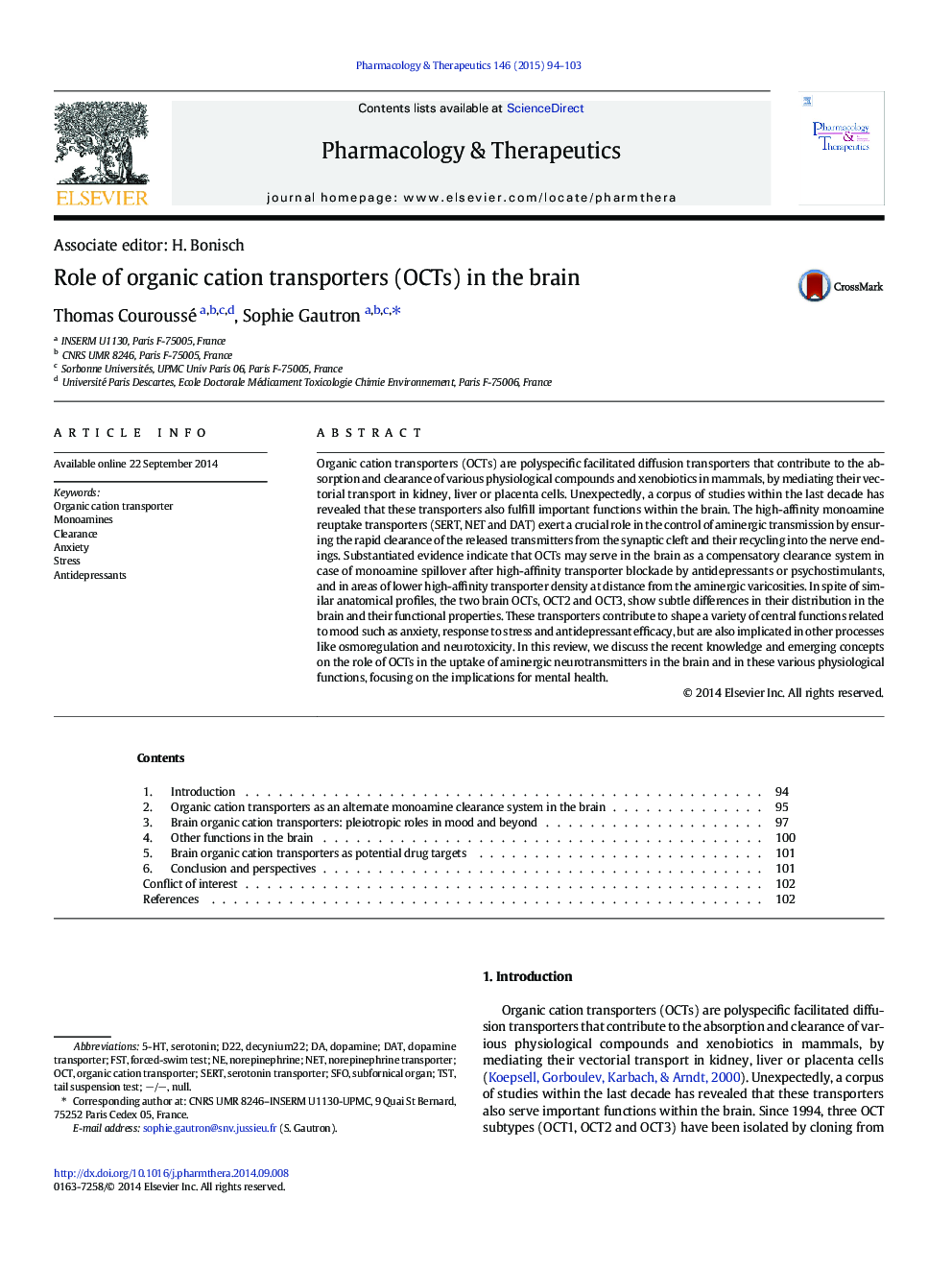| کد مقاله | کد نشریه | سال انتشار | مقاله انگلیسی | نسخه تمام متن |
|---|---|---|---|---|
| 2563134 | 1560959 | 2015 | 10 صفحه PDF | دانلود رایگان |

Organic cation transporters (OCTs) are polyspecific facilitated diffusion transporters that contribute to the absorption and clearance of various physiological compounds and xenobiotics in mammals, by mediating their vectorial transport in kidney, liver or placenta cells. Unexpectedly, a corpus of studies within the last decade has revealed that these transporters also fulfill important functions within the brain. The high-affinity monoamine reuptake transporters (SERT, NET and DAT) exert a crucial role in the control of aminergic transmission by ensuring the rapid clearance of the released transmitters from the synaptic cleft and their recycling into the nerve endings. Substantiated evidence indicate that OCTs may serve in the brain as a compensatory clearance system in case of monoamine spillover after high-affinity transporter blockade by antidepressants or psychostimulants, and in areas of lower high-affinity transporter density at distance from the aminergic varicosities. In spite of similar anatomical profiles, the two brain OCTs, OCT2 and OCT3, show subtle differences in their distribution in the brain and their functional properties. These transporters contribute to shape a variety of central functions related to mood such as anxiety, response to stress and antidepressant efficacy, but are also implicated in other processes like osmoregulation and neurotoxicity. In this review, we discuss the recent knowledge and emerging concepts on the role of OCTs in the uptake of aminergic neurotransmitters in the brain and in these various physiological functions, focusing on the implications for mental health.
Journal: Pharmacology & Therapeutics - Volume 146, February 2015, Pages 94–103